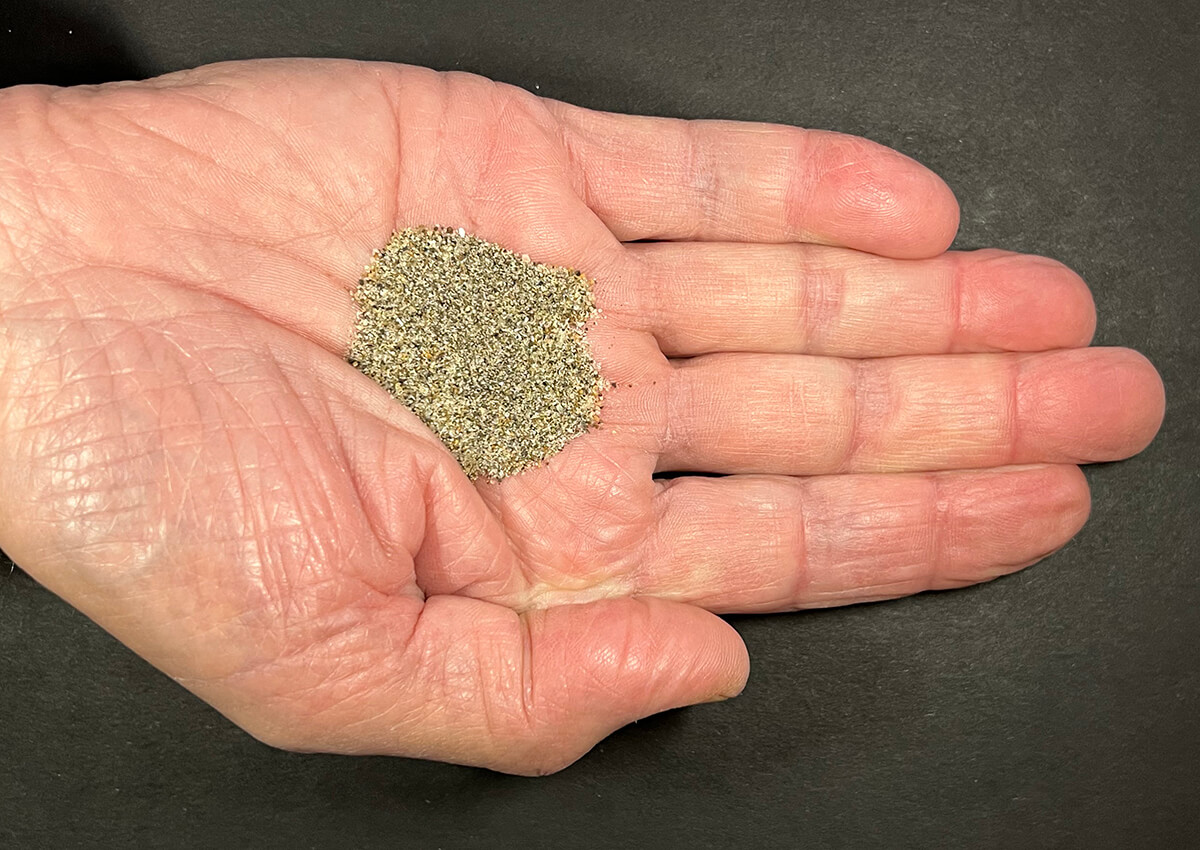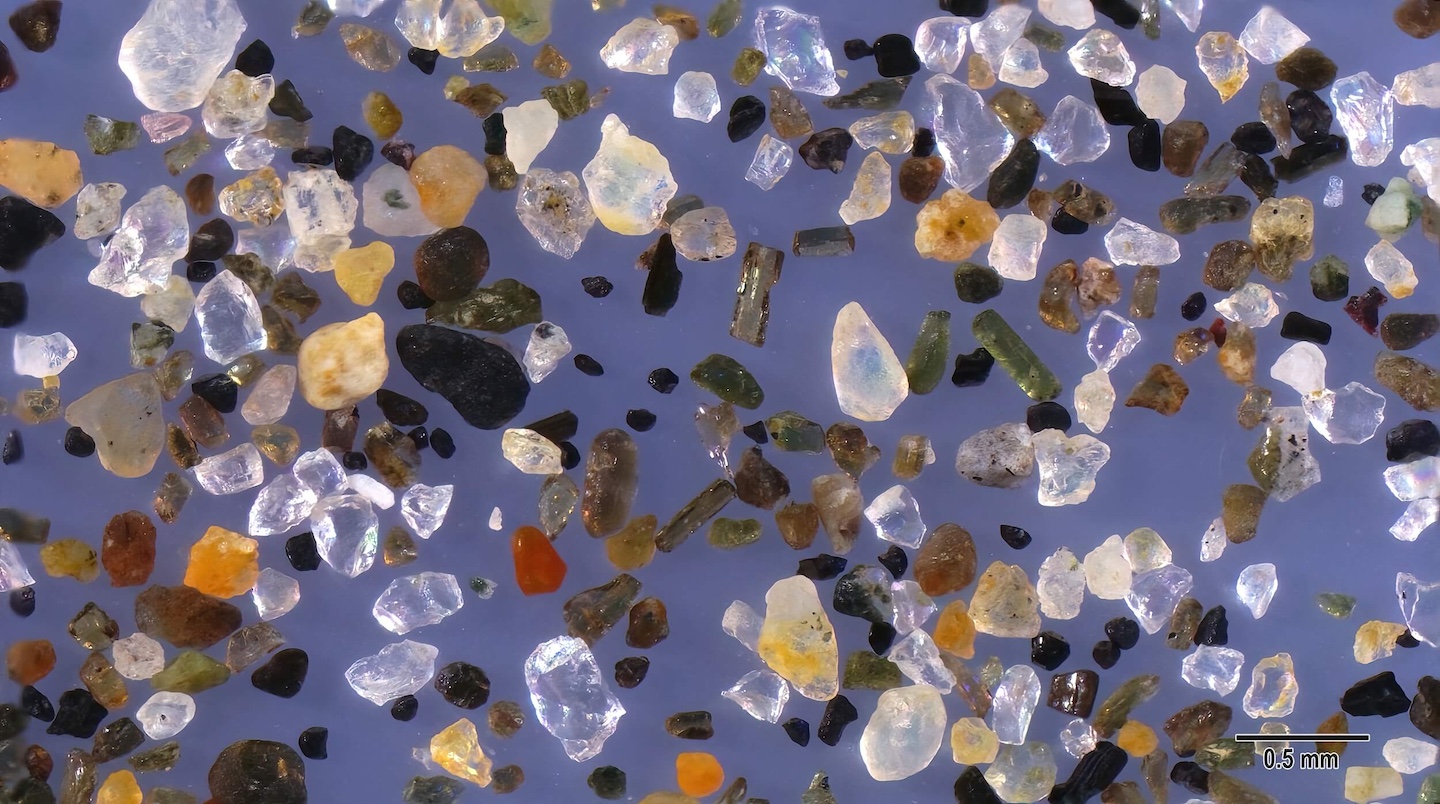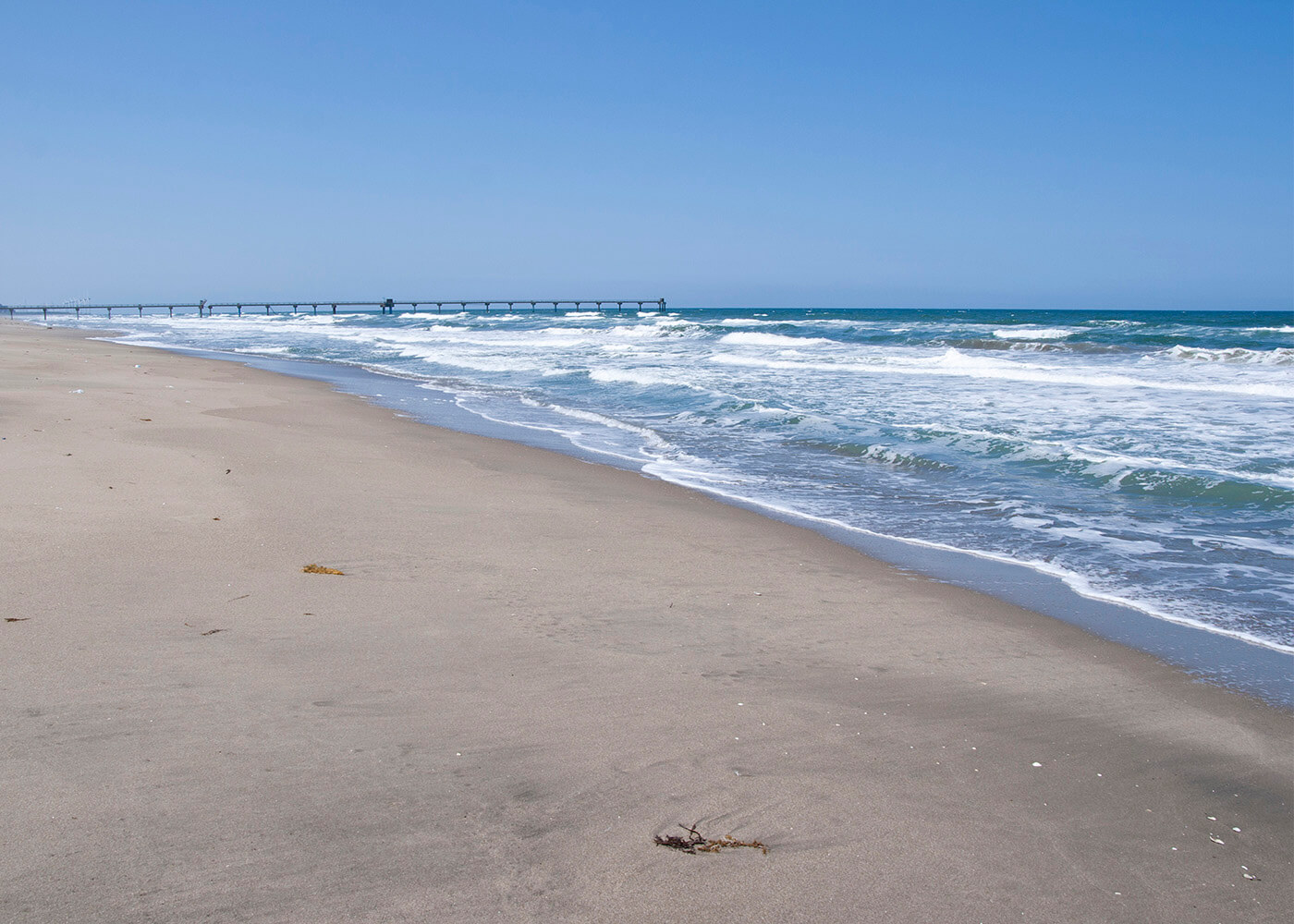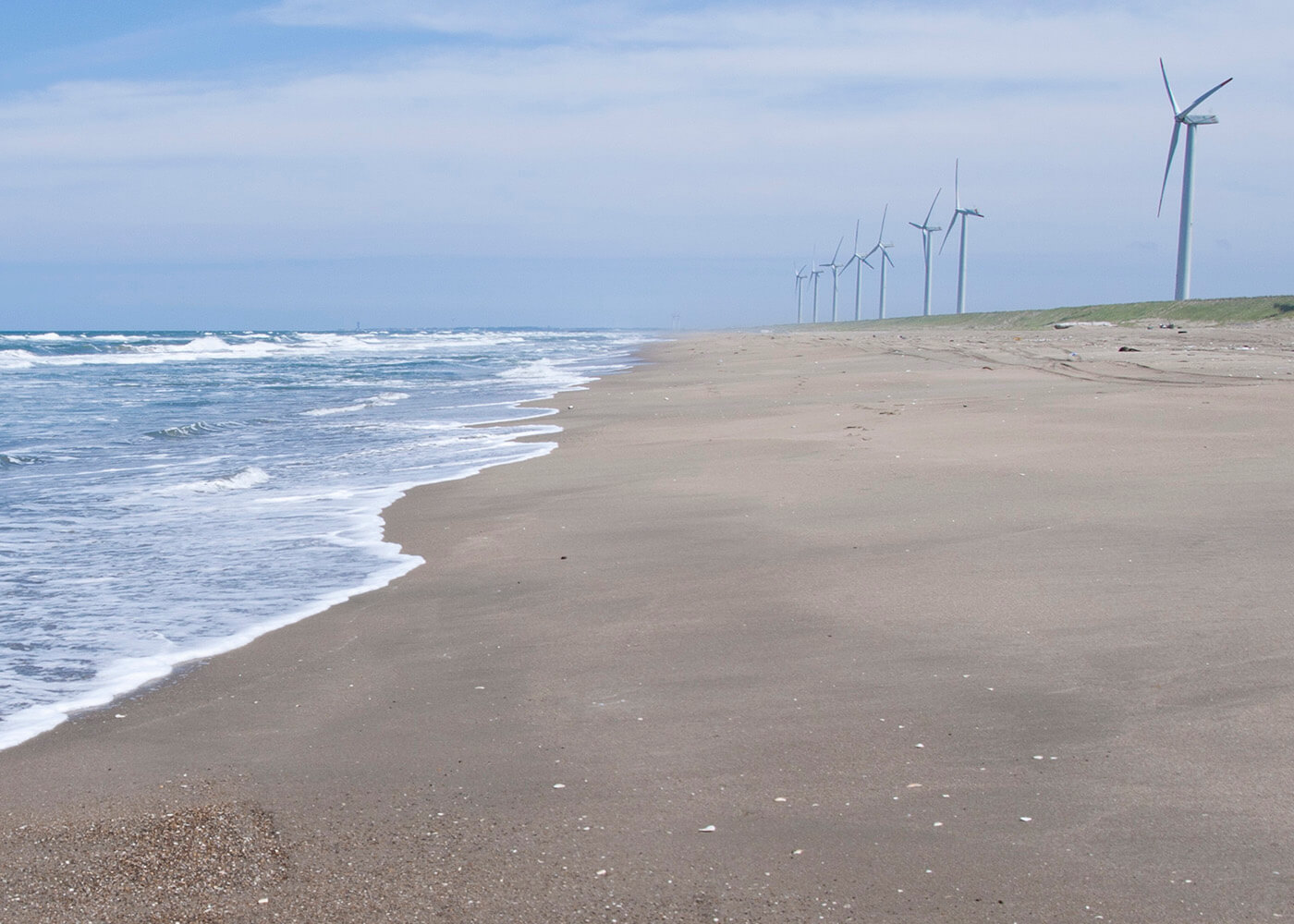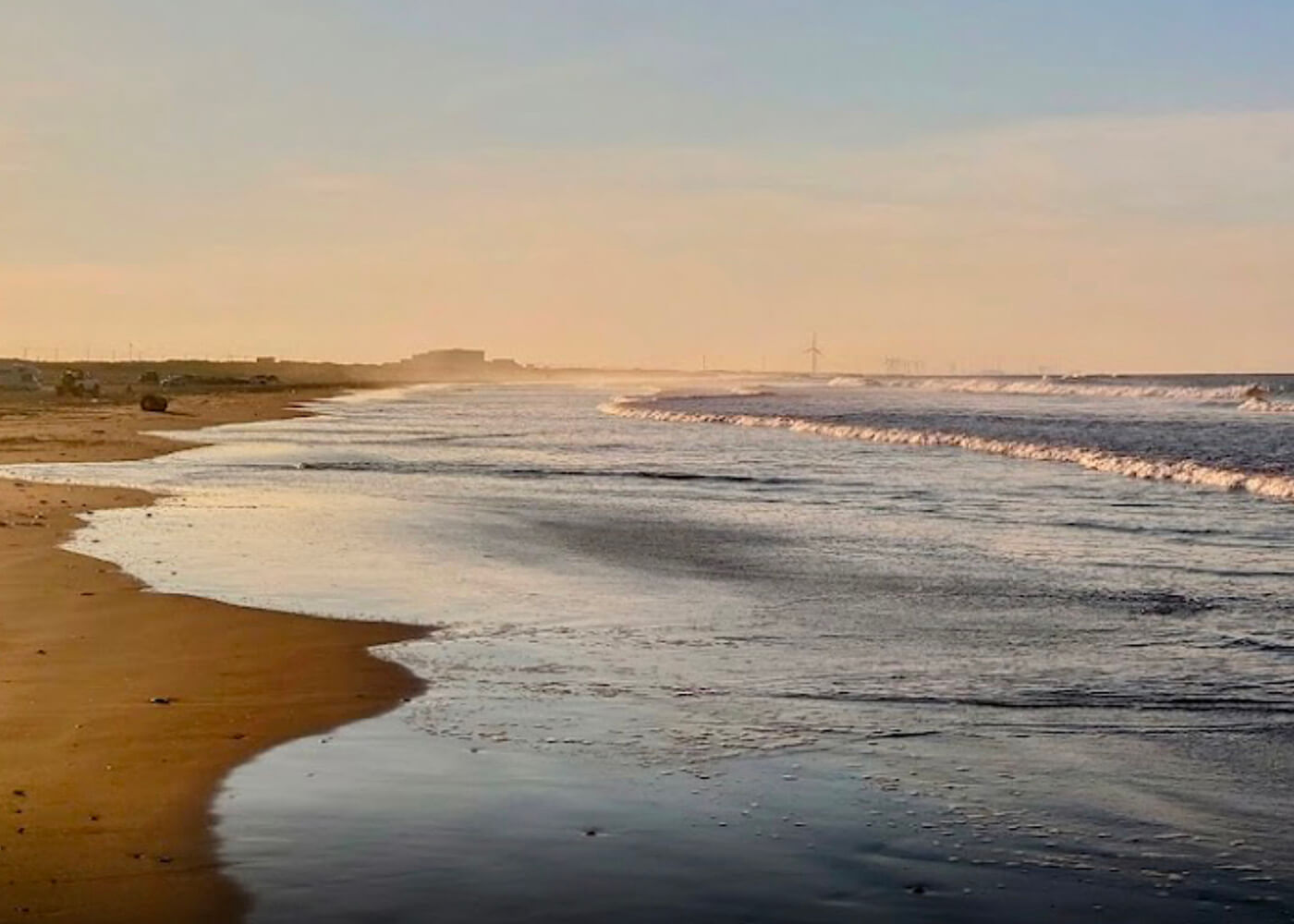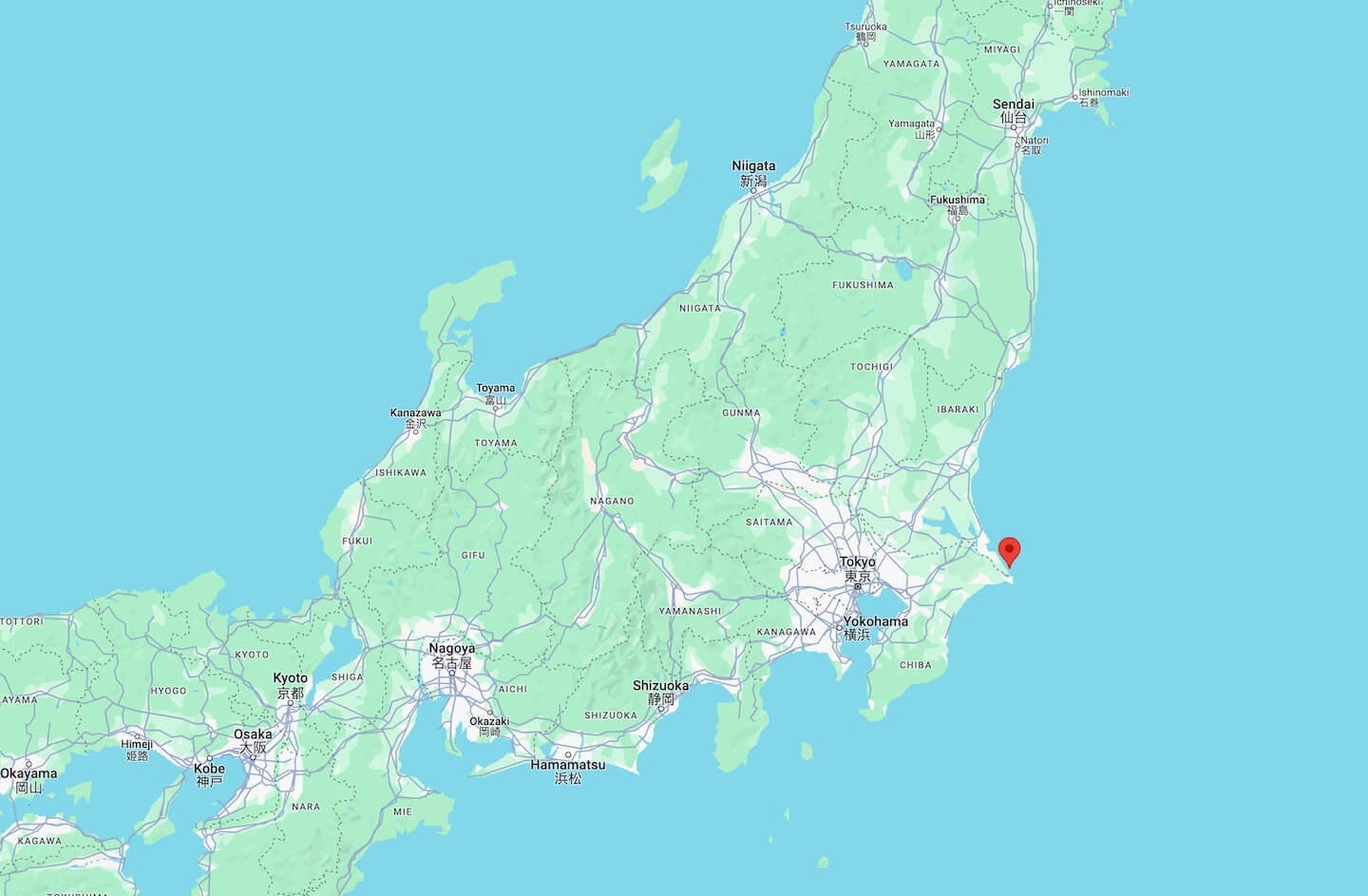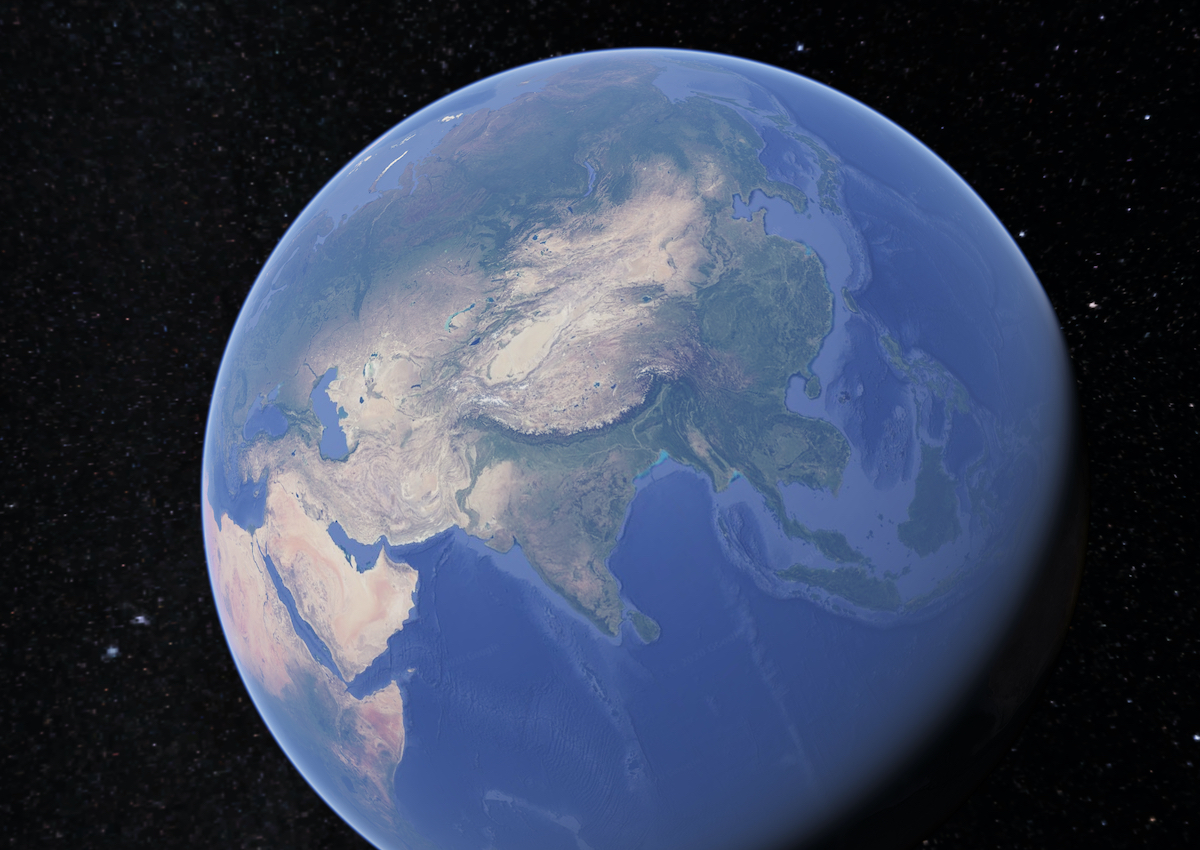Geographic Overview
Hasaki Beach is the southernmost beach in Ibaraki Prefecture and is a popular beach easily accessed from Tokyo. Its popular large and wide beach features shallow waters that stretch a long distance and features gentle waves suitable for family gatherings. As a microtidal sandy beach facing the south Pacific Ocean, Hasaki beach has been well studied for years with respect to storm-dominate effects contributing to morphodynamic shoreline changes.
Sand Gallery
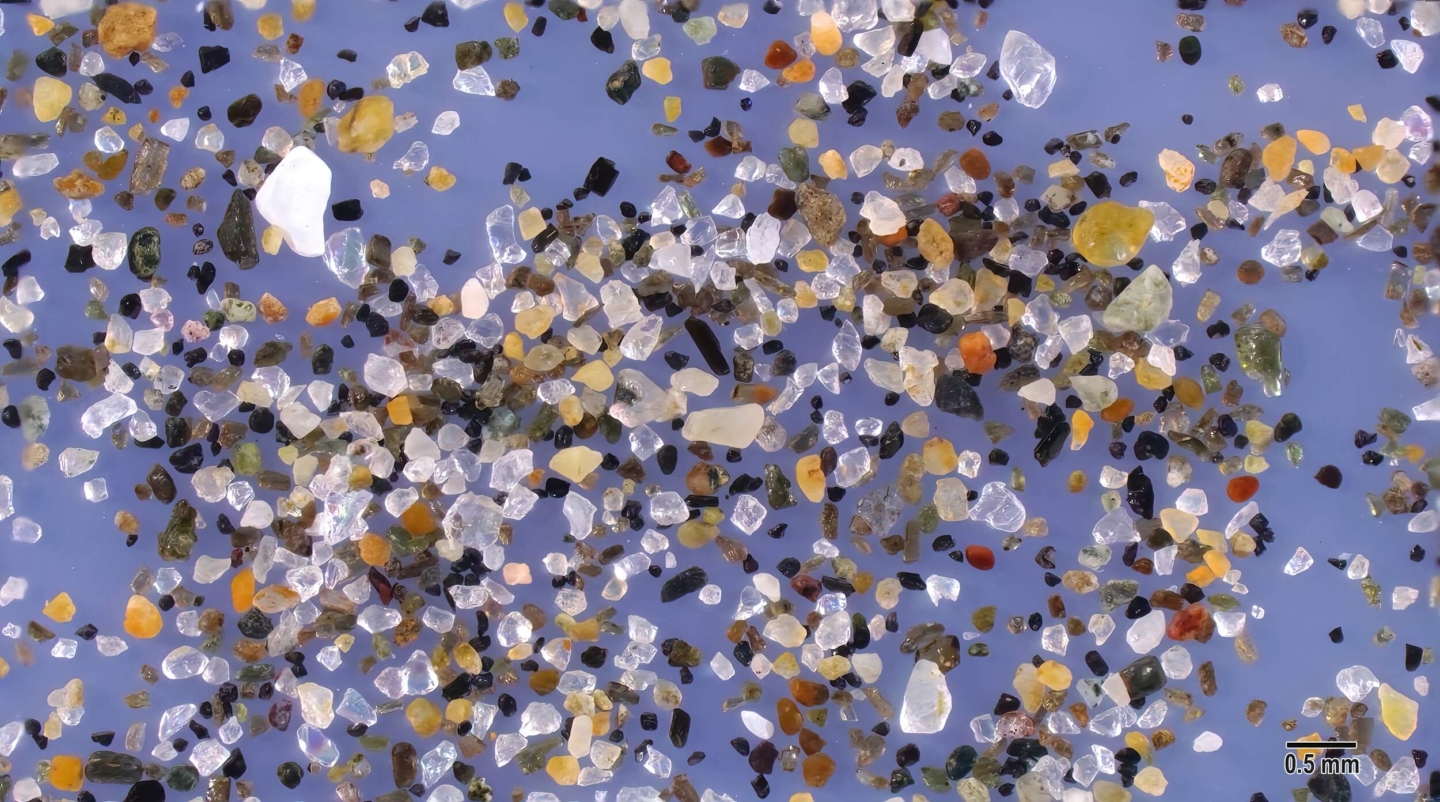
This colorful mixture of sand grains includes clear quartz, opaque tan feldspar and small black sand grains that are probably mostly basalt along with occasional orange, red and green geological sand grains. The large white opaque triangular grain in the upper left of this view is a marine shell fragment.
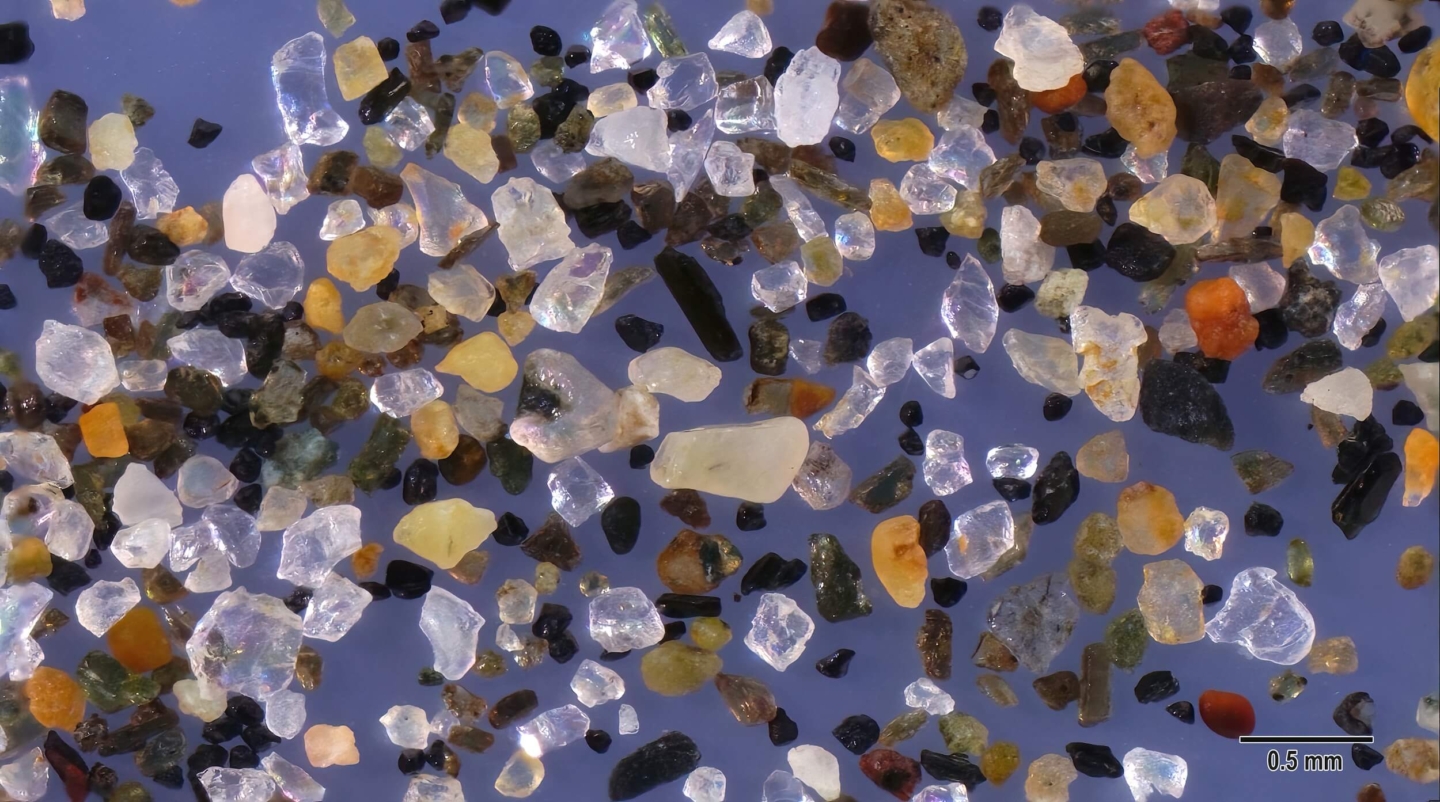
Higher magnification of center part of the image above. The relatively smooth edges of many of the sand grains are probably the result of wearing from constant wave action.
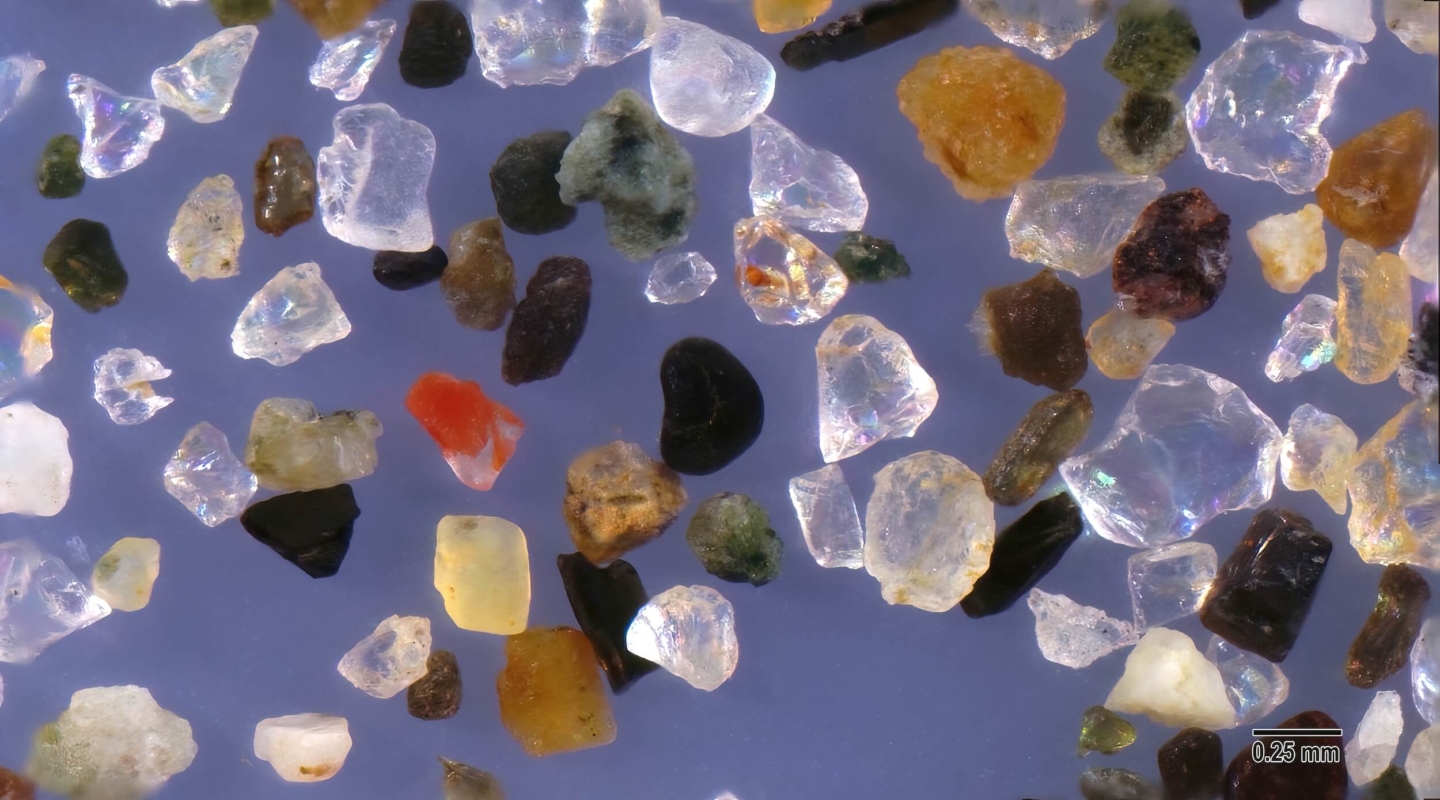
In addition to transparent quartz sand grains, a variety of other geological sand grains are represented in this sample. Tan and yellow sand grains with 90-degree edges are feldspar grains.
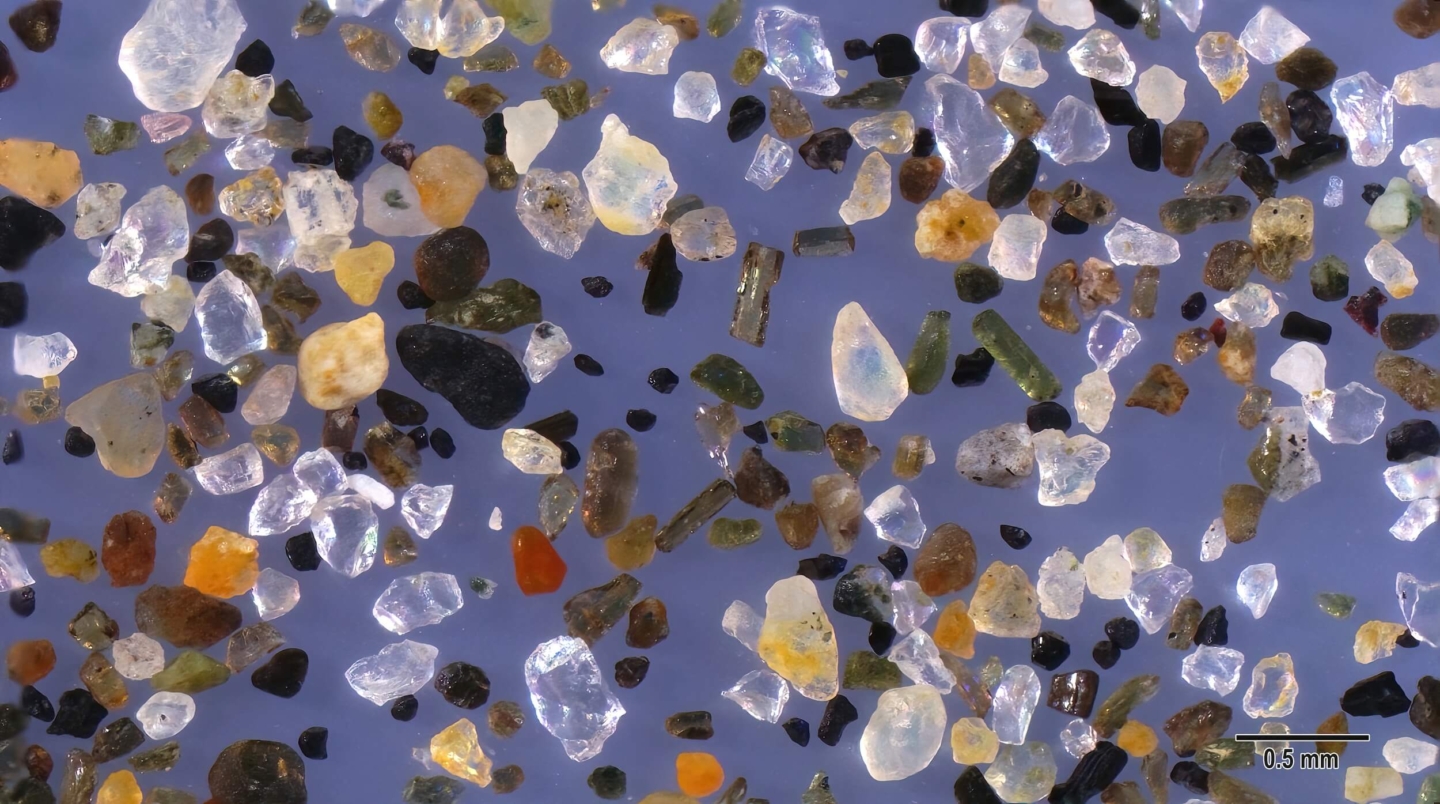
Along with clear quartz, tan feldspar and black basalt sand grains there are elongated but short translucent brown and greenish crystal fragments.
